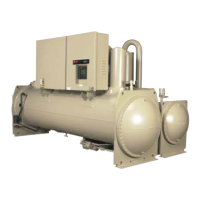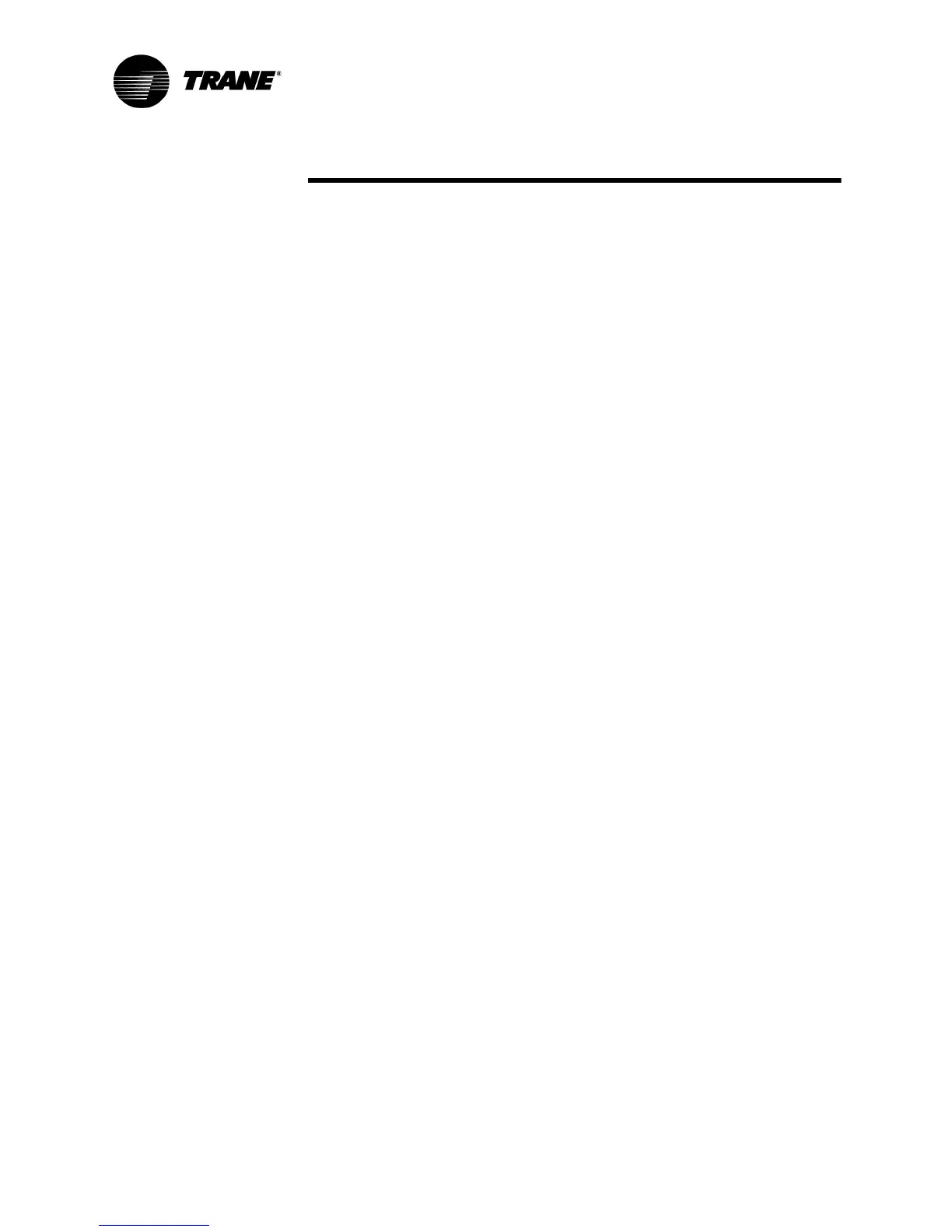82 RTHD-SVX01D-EN
Operating Principles Mechanical
If for any reason oil flow is obstructed because of a plugged oil filter, closed
service valve, faulty master solenoid, or other source, the oil pressure trans-
ducer will read an excessively high pressure drop in the oil system (relative to
the total system pressure) and shut down the chiller.
Likewise, the optical oil level sensor can detect the lack of oil in the primary
oil system (which could result from improper oil charging after servicing, or oil
logging in other parts of the system). The sensor will prevent the compressor
from starting or running unless an adequate volume of oil is present. The
combination of these two devices, as well as diagnostics associated with
extended low system differential pressure and low superheat conditions, can
protect the compressor from damage due to severe conditions, component
failures, or improper operation.
If the compressor stops for any reason, the master solenoid valve closes; this
isolates the oil charge in the sump during “off” periods. With the oil effi-
ciently contained in the sump, oil is immediately available to the compressor
at start-up. Such flows would otherwise purge oil from the lines and the oil
sump, which is an undesirable effect.
To ensure the required system differential pressure is adequate to move oil
to the compressor, the CH530 attempts to both control a minimum system
differential pressure as well as monitor it. Based on readings from pressure
transducers in both the evaporator and condenser , the EXV is modulated to
maintain evaporator pressure at a minimum of 25 psid below the condenser
pressure. Once the minimum is met, the EXV will return to normal liquid
level control (see the paragraph on "Cycle Description". If the differential is
significantly lower than required, the unit will trip and initiate a appropriate
diagnostics and would enforce a compressor "cool down" period.
To ensure proper lubrication and minimize refrigerant condensation in the oil
sump, heaters are mounted on the bottom of the oil sump. An auxilliary con-
tact of the compressor starter, energizes these heaters during the compres-
sor off cycle to maintain a proper elevation of the oil temperature. The heater
element is continuously energized while the compressor is off and does not
cycle on temperature.
Oil Filter
All Series R chillers are equipped with replaceable-element oil filters. Each
removes any impurities that could foul the compressor internal oil supply gal-
leries. This also prevents excessive wear of compressor rotor and bearing
surfaces and promotes long bearing life. Refer to the Section 9 for recom-
mended filter element replacement intervals.
Compressor Bearing Oil Supply
Oil is injected into the rotor housing where it is routed to the bearing groups
located in the motor and bearing housing sections. Each bearing housing is
vented to compressor suction so oil leaving the bearings returns through the
compressor rotors to the oil separator.
Compressor Rotor Oil Supply
Oil flowing through this circuit enters the bottom of the compressor rotor
housing. From there it is injected along the rotors to seal clearance spaces
around the rotors and lubricate the contact line between the male and female
rotors.

